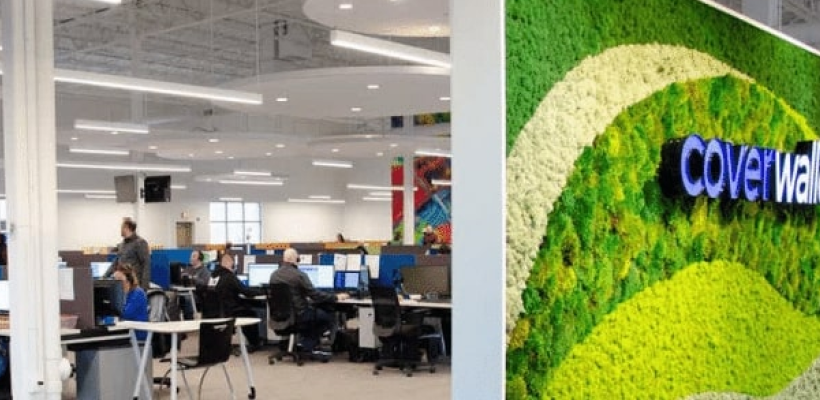Human Resources Management has become increasingly more important in the modern business world. A Successful Human Resources Management System (HRMS) helps link the division between employee’s performance and the company’s strategic objectives. In order to enhance productivity in the workforce, retain the best talent and create a healthy work environment, it’s absolutely essential that your organisation adopts workforce management software corresponding with the core values of the company.
I’d be delighted to introduce you to Ramin Nathani, an experienced HR specialist with experience in many companies, but today we will focus on his previous role at ActOn Finishing LTD, a company which works on designing and developing machinery and consumables for mass finishing applications. Ramin focused on all aspects of HR and was responsible for structuring and implementing HR throughout ActOn:
“When I joined ActOn it was a non-hr traditional engineering company, one would say a blank canvas, and by pushing boundaries I successfully introduced, nurtured and grew HR across the group at 4 different sites. Coventry, Stourbridge, India and Malaysia.”
In this interview, Ramin will reveal his personal experiences working at ActOn, a company which hadn’t previously adopted HR policy and how HR software revolutionised this practice …keep reading for some insights!

Why was it necessary to introduce and grow HR throughout ActOn?
Back in 2015 a new business strategy was developed with the primary focus on growth, and alignment. This triggered the business review, where it identified key requirements to build and sustain a foundation on People, Skills, Culture, Policies & Practices. We needed the right people in the right jobs doing the right things at the right time; and the need to be able to nurture them; and putting in the right mechanisms for their success. I recall ‘clarity’ and ‘the right way’ was a big hit from the start. The impacts of clarity on roles and responsibilities came with a whole host of benefits around behaviours, such as ownership, engagement, supportiveness/Team-working, which induced the uprising of a new culture.
Another aspect about nurturing the people was to be able to improve their working experience by being quicker to respond to their needs, identify and support personal development, reduce stress and work-levelling, improve teamwork, build trust and passion, and finally and most importantly recognition. This required a complete revamp of the employee life-cycle and also the need for HR involvement at a strategic level to map the future business growth plan in a sustainable and effective approach.
Did you implement HR software to the company, to assist in successful human resources management practices?
Adapting technology and digitalisation were key to HR to improve efficiency, employee experience, and effective management. This was an enabler to shift from a traditional HR to Strategic HR. We were able to improve our employee response rate in regard to queries and leave applications, and greatly improve employee access to information. Tasks were streamlined and delegation became possible, not only locally but globally. Another aspect was visibility and consistency which is always appreciated by the senior leaders.
In summary this led to improved efficiency through reduction of wastes (time & costs), offered the ability to manage employees remotely, and establish a database to obtain and manage knowledge, and where metrics could be extracted.
Did you find there were improvements internally within your company culture since implementing HR across the group?
Absolutely, never underestimate how quickly you can gain an employee’s trust by being transparent and consistent with any approach. To further put it-‘if you are the driver of your career, and can see the map, you will follow the route, to reach your destination’.
Do you think its essential organisations use HRMS to automate timely processes?
In essence, the purpose of technology is to reduce costs and improve efficiency by increasing response rate and quality of available information. All the other benefits are a bonus, such as improved communication, visibility, accessibility, measures and metrics to evaluate KPIs, etc. Nowadays the human interaction has significantly reduced, and software automation has become the norm to make organisations globally competitive. Saying that, I still believe, HR automation sits on one side with the necessity of a person sitting on the other side, to process and evaluate data in contraire of a script or BOT response, hence maintaining the human element with the improved effectiveness for EEs & ERs.
How did you effectively manage HR practices in four different locations?
The utilisation of HR software offered employees and managers access to information, policies, communications, and training, with self-initiated triggers, alerts for upcoming actions, and a reporting feature to give myself a live overview. This platform also enabled EEs access to information which reduced email congestion relevant to HR queries. Performance management tools were established and mapped accordingly to each work category.
Another enabler was the method of data entry for all aspects, which supported a consistent approach (even without an SOP) to gather and input data, where internationally all employee profiles were created consistently and comprised of the similar documentation and methodology to adhere to. This brought alignment to the process of managing the employee lifecycle, but also allowed administrators globally to populate in the same ‘one way’ with limited coaching.
And finally, improved communication facilitated the leadership’s vision and expectations of employees in an instantaneous manner. This was the key enabler to drive and support HR from top down across all locations.
From your experience, what are the key learning points that you would offer to another firm without any HRMS in place?
Take a moment and reassess your objectives and where you want to be. What resource are you short of but cannot afford to increase with your present circumstance? What do you want to improve and what do you want to achieve – efficient, competitive or sustainable? If the answer is additional time for business leaders, managers, HR; opportunity to step back and get a top view; ability to improve communications to increase engagement and managing their queries; or a tool to identify skill shortages, and need access at your fingertips to make educated decisions, you may want to consider a HR software. There are numerous ones in the market, but I would highly recommend to:
- do your research and invest time in trialling at least 2 different types.
- find software language compatibility with your ERP, T&A, existing software.
- choose one that would be seamless to upgrade and also to migrate.
- definitely have a (good) mobile app interface which is a big win with employees to get onboard.
- have ease and accessibility to Reporting
Did you receive any positive feedback from your employee workforce after implementing HRMS?
Yes – Concerns raised in a questionnaire and HR Gemba walk identified various areas of improvement and potential quick wins. Once I implemented a HRMS, we were instantaneously able to tackle the majority of raised concerns, and it became a driver for engaging employees and contributing to the software’s success.

